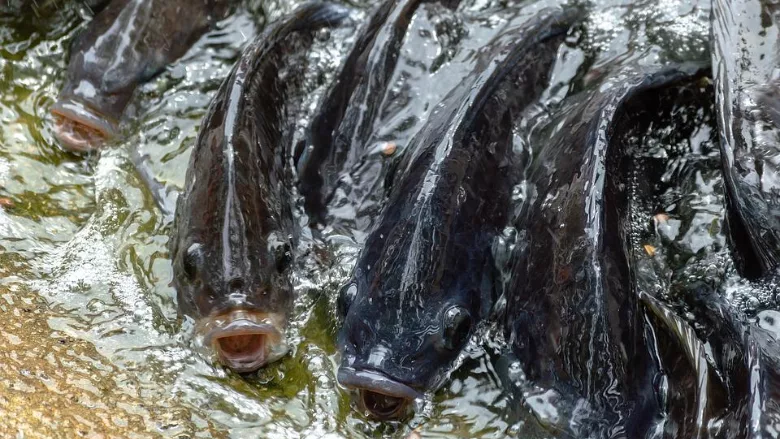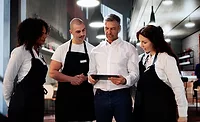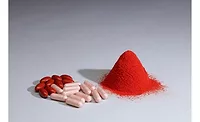The BAP Label and the Food Safety Imperative

Credit: 1CzPhoto via Pixabay
By 2050, the world population is expected to have grown to 9.8 billion people. That population will need to be fed every day, a difficult proposition given the challenges of a warming planet and the reduction of arable farmland. The sea can provide a solution for global sustenance with aquaculture, the controlled cultivation of aquatic animals in the sea or in inland waters.
Aquaculture is the fastest-growing form of food production in the world. It plays an increasingly pivotal role in addressing the problem of feeding a burgeoning population with fewer negative environmental impacts. The world's oceans already provide 17 percent of the animal protein consumed around the world, and fish farming is one of the most environmentally efficient, lesser resource-intensive, and eco-friendly ways to produce even more animal protein.
While maintaining a sustainable source of fish is vital, it is meaningless if its safety is questionable. As we increasingly turn to aquaculture, there is a greater safety imperative—one that must be immediately identifiable as trustworthy by consumers. At present, aquaculture suffers from many misconceptions. Critics claim that farmed seafood is unsafe to eat, citing myths ranging from stagnant water conditions to high rates of antibiotic use, or stress due to intensive culture conditions.
However, U.S. aquaculture products are among the most regulated foods on the market. Globally, aquaculture producers use Hazard Analysis Critical Control Points (HACCP), administered by the U.S. Food and Drug Administration (FDA), as a common standard for food safety, and also utilize food safety certifications benchmarked by the Global Food Safety Initiative (GFSI), providing customers and consumers alike with the assurance that their food safety program is well managed.
The BAP Label Food Safety Guarantee
Among seafood certification programs, Global Seafood Alliance's Best Aquaculture Practices (BAP) label is the most comprehensive third-party certification system in the industry.1 It covers the entire aquaculture production chain (processing plant, farm, hatchery, and feed mill) and follows the four pillars of responsible seafood:
- Environmental responsibility
- Social accountability
- Food safety
- Animal health and welfare.
Every step in the production chain can be traced and certified, translating to healthy fish for both the consumer and the planet. BAP certification encompasses a number of requirements with regard to the health and safety of farmed seafood:
- Every step of the process is certified. The BAP certification process starts with the egg and follows every step of fish growth right up to processing, meaning that fish meet the highest standard of safety.
- Antibiotic use is restricted, and products are tested to ensure that regulations are followed. BAP standards prohibit the prophylactic use of antibiotics or treating healthy animals to prevent disease. BAP also does not allow antibiotics to be used to promote growth. However, BAP does allow for use of antibiotics when used to prevent the spread of disease and only following a diagnosis of infection or disease by a trained aquatic animal health specialist. The certification requires a withdrawal period before harvest so that no antibiotics are present at the time of harvest. In addition, the BAP program aims to exclude the use of antimicrobials that the World Health Organization (WHO) categorizes as "critically important" to human medicine, and sensitivity testing shall accompany any application of antibiotics.
- Feed and finished products are tested for microbiological and chemical contamination, such as medicinal substances and heavy metals.
- BAP's feed mill standard includes requirements for ingredient sourcing of fish feed.
- Farmed fish eat feed that contains a variety of ingredients and is formulated for optimal nutritional value, including soy, fishmeal, fish oil, microalgae, and vegetable oils.
- Seafood from BAP-certified producers is produced in an environment with a pest management plan in place. To prevent animal or insect pests, facilities must have measures in place that prevent infestations, which includes routine inspections.
- Water quality is closely monitored. Water quality is considered to be one of the most important factors contributing to fish health.
- The GSA Seafood Processing Standard is benchmarked to the GFSI standard, and companies must undergo a successful third-party audit to be certified.
Aquaculture Myths Explained
Looking for quick answers on food safety topics?
Try Ask FSM, our new smart AI search tool.
Ask FSM →
BAP's consumer campaign, "Healthy Fish, Healthy Planet, Healthy You" works to address common myths about the safety of aquaculture seafood. One common concern surrounds farmed fish and mercury. In the wild, fish can absorb mercury through their food and through the water passing through their gills. Mercury is a naturally occurring element; however, human industrial activity has increased the amount of mercury present in our rivers, lakes, and oceans. Once mercury gets into the food chain, it "bioaccumulates" up the chain into the larger predators. This is why larger fish may have more mercury than smaller fish. With aquaculture, because the fish are eating formulated feed, mercury is less of a concern because the fish are not being exposed to it through the food chain.
Another myth is that farmed salmon is full of color-added dyes. Farmed salmon derives its pink color from its feed, specifically from a carotenoid called astaxanthin. In the wild, salmon get astaxanthin from consuming food, like krill or shellfish. Farmed salmon's feed is supplemented with astaxanthin, so they are getting the same carotenoids that they would find in the wild. Astaxanthin is an antioxidant and is available to purchase as a supplement because of its health benefits, such as reducing inflammation, immune system support, and potential anti-aging benefits.
Given the growing global dependence on seafood for animal protein, aquaculture has inherent advantages when it comes to food safety. The environments at fish farms are easier to control and test, making it easier to mitigate possible risks, as compared to wild-capture fisheries. The Global Seafood Alliance's BAP label inspires consumer confidence and shows how producers are shaping the future of healthy, responsible foods that the world population needs.
- Global Seafood Alliance. "Best Aquaculture Practices." 2022. https://bap.globalseafood.org/.







